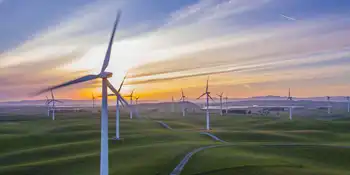Wood as a power source may be making comeback
While airwaves have been permeated by advertisements for solar and wind power, last year wood generated more net electricity in the U.S. than those two up-and-comers combined.
New wood-burning electricity plants are again being proposed from Massachusetts to New Mexico as the nation finds itself in a third energy shock.
Using wood for electric power generation grew rapidly during the energy crises of the 1970s and 1980s, but fell away when the price of coal and fossil fuels dropped.
Wood as a power source garnered renewed interest as commodity prices spiked.
That developers are again looking to forests for fuel has many worried.
"We don't want to mine our forest for energy," said Bryan Bird, of WildEarth Guardians, a Santa Fe, N.M. environmental group.
There were 196 wood burning electricity plants in the United States as of January 2007, including 72 with 40 megawatt capacity or larger, according to the Department of Energy. The bulk of today's wood power comes from plants that mainly serve the onsite lumber or paper mills that supply their fuel.
Developers say they wouldn't need to cut down trees to power plants because there is a surplus of wood currently available.
Many proposed plants plan to use wood left over by routine activities such utility line clearing or from existing timber companies. Wood is also found on forest floors.
"There is a tremendous resource," said Neil Rossmeissl, a technology manager at the Department of Energy.
That there is no downside to the use of wood as fuel is disputed by Bird and other environmentalists.
"A forest doesn't waste anything," he said. "That's the next generation of soil and nutrients in a forest ecosystem."
Last month, Duke Energy Corp., one of the nation's largest electric power companies, and the French nuclear engineering company Areva announced plans to build up to 12 wood-electricity plants with roughly 50 megawatt capacity on the Eastern Seaboard in the next six years. (A one megawatt plant can supply up to 1,000 homes with power).
At least another eight wood-burning electricity plants of 40 megawatt capacity or larger have been proposed around the country, according to New Energy Finance, which provides information to investors in renewable energy markets.
Wood energy projects benefit from federal subsidies that developers say are essential. New mandates in many states to increase renewable power use has led to additional incentives.
In Massachusetts, for instance, renewable energy must make up 15 percent of the state's electricity supply by 2020, compared with 3.5 percent now. To encourage growth, power plants get a market-based premium for producing renewable energy, currently about $50 per megawatt hour.
Wood, however, has far less stored energy than fossil fuels and coal, so more must be gathered, trucked and burned to produce the same power. Higher transportation costs mean wood plants must gather their fuel nearby, limiting where plants can be located.
The issue of carbon neutrality is also a point of contention. Opponents say the carbon given off when wood is burned isn't quickly offset by carbon absorbed when a tree grows. Susan Reid of the Conservation Law Foundation sees promise in wood, but warns increasing demand could push the limits of how much wood can be used before forests are damaged.
And like any power plant, local opposition can be fierce.
A plant in the western Massachusetts town of Russell was delayed this summer after the state said 150 to 240 daily truck trips to the plant would be to disruptive to the downtown region.
Developers are determined to move forward, and may build a road that bypasses downtown.
"We are in trouble as a nation and we've got to utilize every single electricity production source we can. Whatever it is," said William Hull, one of the developers at the proposed 50 megawatt plant.
Related News

BNEF Report: Wind and Solar Will Provide 50% of Electricity in 2050
LONDON - In a report that examines the ways in which renewable energy demand is expected to increase, Bloomberg New Energy Finance (BNEF) finds that “aggressive decarbonization” will be required beyond 2030 to meet the temperature goals of the Paris Agreement on climate change.
Focusing on electricity, BNEF’s 2019 New Energy Outlook (NEO) predicts a 62% increase in global power demand, leading to global generating capacity tripling between now and 2050, when wind and solar are expected to make up almost 50% of world electricity due to decreasing costs.
The report concludes that coal will collapse everywhere except Asia, and, by 2032,…





